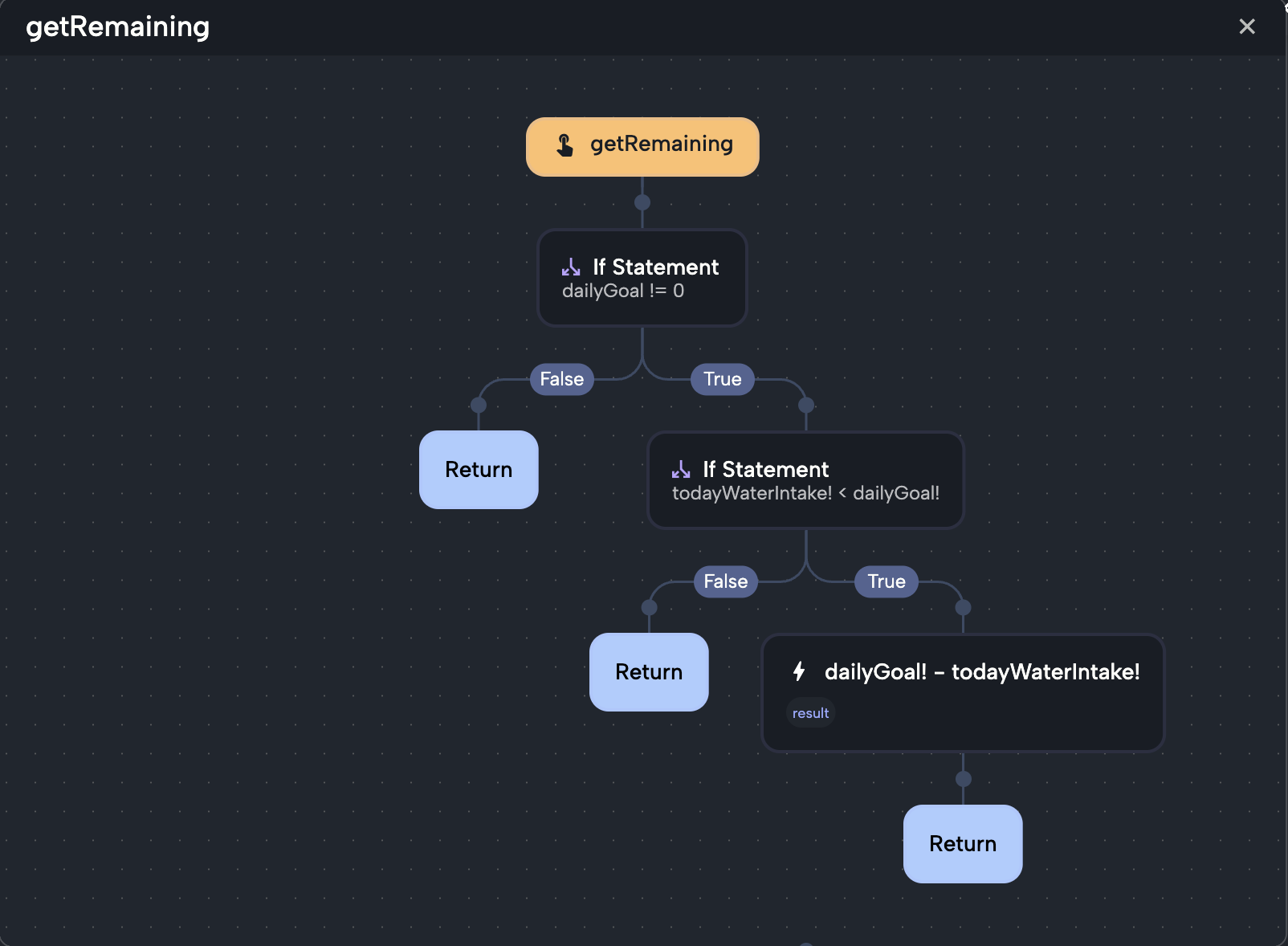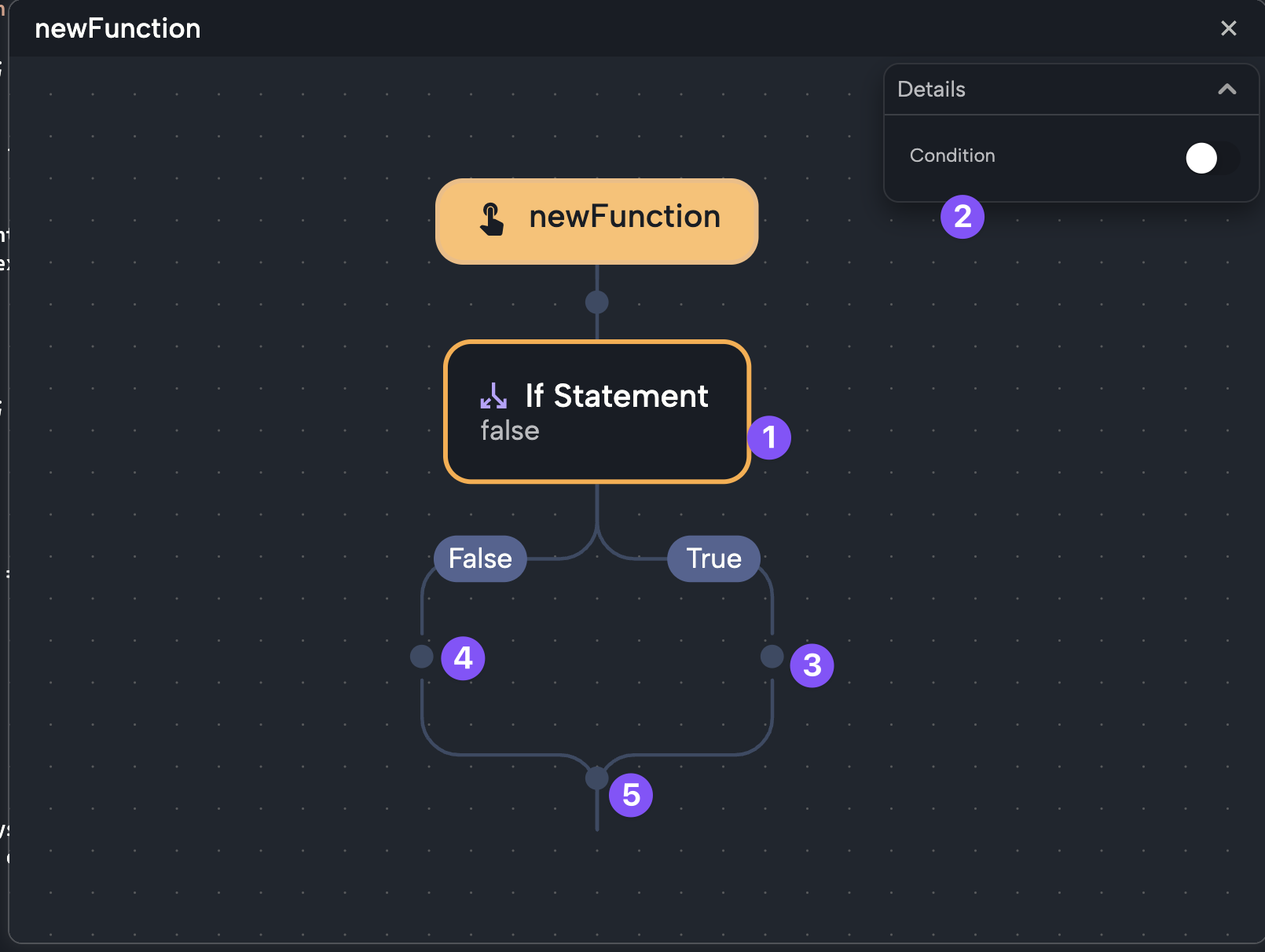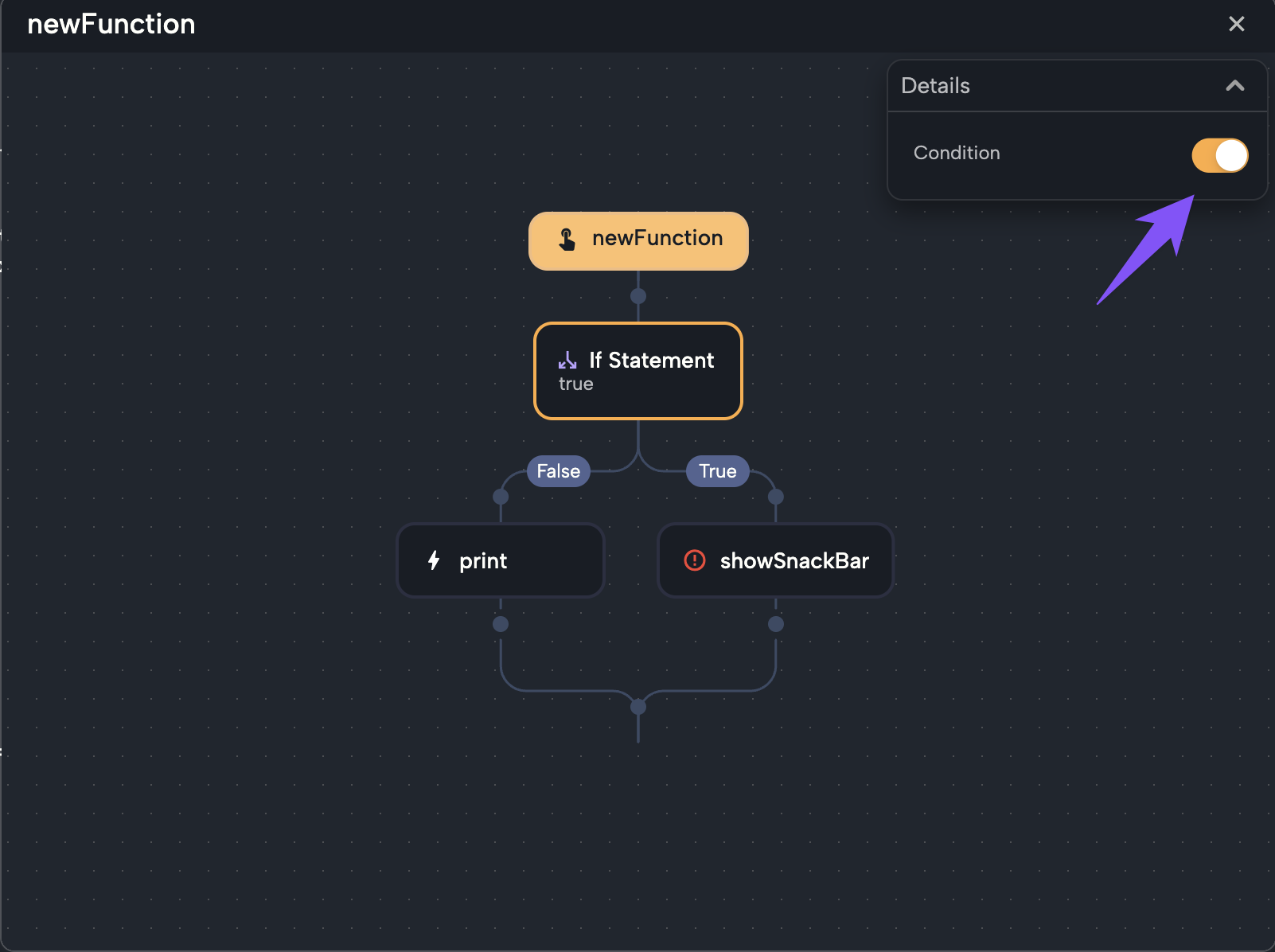If Statements
The if statement is one of the most essential control flow nodes you can use in Nowa. It allows your app logic to branch in two directions—True or False—based on a given condition.
This is perfect for executing different logic depending on whether something is true or false, like whether a user is logged in or a value is empty.
How to Add an If Statement
To insert an if statement node into your logic flow:
- Open the logic nodes menu.
- Click the ➕ button below any existing node.
- Choose If Statement from the list.
You can easily build nested if statements inside each other.
Simply click on + inside the true or false branuch inside the first if statement node and add another if statement there. Here's an example:

Parts of the If Statement
An if statement node in Nowa has three main parts:
-
Condition
This is the logic that decides whether theTrueorFalsebranch will be executed. It must return a boolean (trueorfalse). -
True Branch
This path runs if the condition istrue. You can add nodes by hovering over the point inside theTruebranch and then clicking the ➕ icon. Nodes are executed from top to bottom. -
False Branch
This runs if the condition isfalse. Add nodes the same way as in the True branch by hovering over theFalsepoint.
Visual Overview
Here’s how an if statement looks inside Nowa:

-
If Statement Node
Select this node to edit the condition. -
Condition Field
Once selected, the condition appears in the details panel on the right. -
True Branch
Hover over theTrueside to add nodes that run when the condition is true. -
False Branch
Hover over theFalseside to add nodes that run when the condition is false. -
End of If Statement
Any node added after this point continues the flow beyond the if statement.
Setting the Condition
The condition field must evaluate to a boolean value. There are several ways to set it up:
1. Toggle (Default)
You’ll first see a simple toggle. Turning it on means the condition is always true (and the True branch runs), while off means it’s always false.

2. Link to a Value
Click on the condition field itself in the details panel to open the linking menu, which used to connect fields to other parts like variables, etc. You can connect the condition to:
- Local Variable or Parameter
Link to a local Boolean variable or parameter (for example, isLoading boolean that is used to hold the loading state) defined in your screen or component.
- Global Variable
Connect to a Boolean global state variable from the Globals section in the linking menu.
The variable or function that linked with the "condition" must result in a boolean—true or false.
- Function (Returns Boolean)
Use a function that returns a boolean.
To link it:
- If it’s a local function, find it in the Locals section.
- If it’s a global function, go to Globals, choose the state, then click ➕ to select the function.
When linked to a function, the function runs when execution reaches the if statement, and its result is used as the condition.
- Custom Expression
Write any custom Dart expression that results in a boolean, for example:
isLoading == true && user != null
- Operators
You can build a condition using comparison or logical operators—like greater than, equal, or not equal.
To use them:
- Inside the linking menu, go to the Operators section.
- Select the operator you want (e.g.,
greaterThan,Equal,logicalAnd, etc). - Set the type for both sides (like
intif comparing integers). - Then set the left-hand side and right-hand side:
- You can enter values manually.
- Or click each side to open the linking menu and connect it to a variable, function, or expression.
Example:
Use the greaterThanOrEqual operator to check if a dailyGoal variable is greater than or equal to 1400.
This same logic could be written directly using Custom Expression if you prefer by typing dailyGoal >= 1400
Also, after using an operator node to build the condition, you can open its Custom Expression view to see the generated expression for that operator—and modify it if needed.
- Compute
This option creates a custom boolean-returning function for complex logic.
How it works:
- Click Compute under the condition field.
- Nowa creates a function and links it to the condition.
- To edit the function, click its name beside "condition" and choose Open in Circuit.
- You can:
- Add parameters (e.g.,
token). - Pass data into it from the if statement's details panel.
- Customize the logic to return true/false.
- Add parameters (e.g.,
Notes & Tips
-
Detach a Condition
Click on the condition and press Detach to remove any link. -
Create New Variables/Parameters
Inside the linking menu, you can:- Click Create Variable or Create Param to instantly generate a new local boolean and link it to the condition.
- Use Locals or Globals to connect to existing ones.
The if statement is a powerful way to handle dynamic logic visually. Whether you need a simple toggle or a fully custom condition, you can adapt it easily using variables, functions, or expressions. For now, play this tutorial that will start from the part where If statement node where used while building a Water Tracker App.